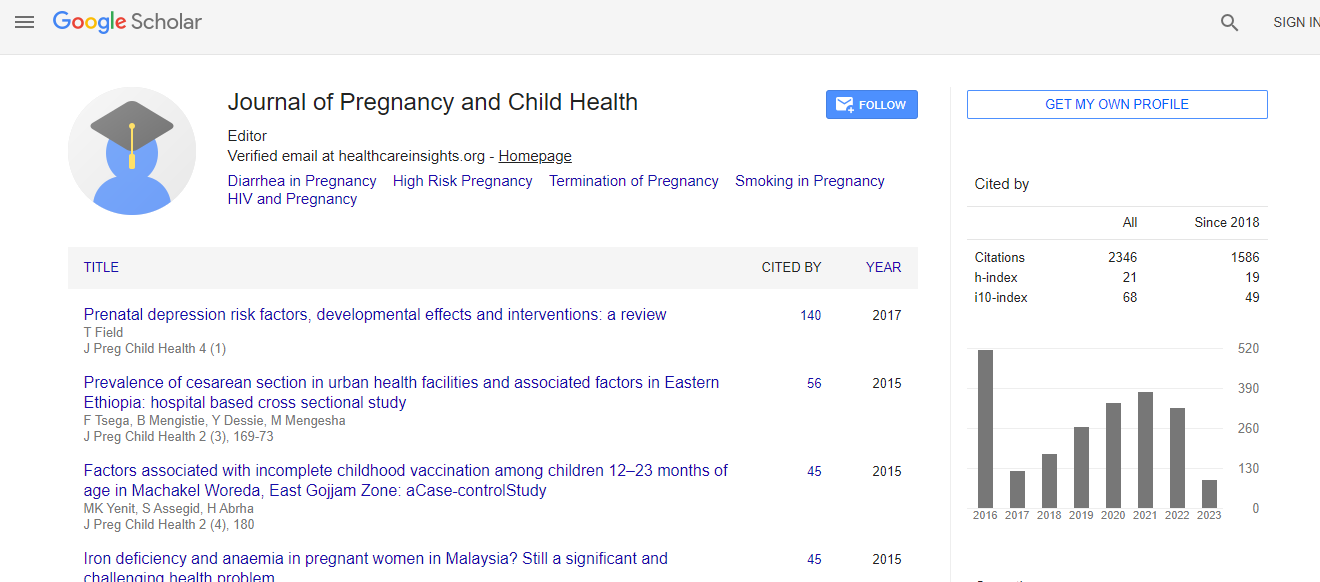Research Article
The Prevalence of Anemia In Pregnancy In A Developed Country – How Well Understood Is It?
| Hayley Messenger and Boon Lim* | |
| Department of Obstetrics and Gynecology, Royal Hobart Hospital, Liverpool St, Hobart, Tasmania 7000 Australia | |
| *Corresponding Author : | Boon Lim Department of Obstetrics and Gynecology Centenary Hospital for Women and Children Canberra, ACT 2605, Australia Tel: +61431689293 E-mail: boon.lim@act.gov.au |
| Received date: Feb 19, 2016; Accepted date: Mar 18, 2016; Published date: Mar 21, 2016 | |
| Citation: Messenger H, Lim B (2016) The Prevalence of Anemia in Pregnancy in A Developed Country – How Well Understood is it?. J Preg Child Health 3:231. doi:10.4172/2376-127X.1000231 | |
| Copyright: © 2016 Messenger H, et al. This is an open-access article distributed under the terms of the Creative Commons Attribution License, which permits unrestricted use, distribution, and reproduction in any medium, provided the original author and source are credited. | |
Abstract
Background: Anemia is known to be common in pregnancy, yet prevalence has not been comprehensively assessed by gestational age and nutritional cause in a large cohort from developed countries, with consideration of socio-demographic influence. Aims: To quantify the prevalence of anemia (hemoglobin less than 11g/dL) during each trimester of pregnancy and determine possible causative nutritional deficiencies in a developed country with a homogenous population relative to mainland Australia. Materials and Methods: This retrospective cohort study was undertaken in Tasmania, an Australian state with 6608 registered births in 2011. Results for the majority of pregnant women in 2011 were obtained from databases of major laboratories in the state, encompassing 5696 pregnancy episodes, to determine anemia prevalence in each trimester and around term. Results: A significant decrease in hemoglobin levels during pregnancy was observed from 13 ± 0.96 g/dL (0-13 weeks gestation, 1.9%, p=0.522) to 11.9 ± 1.04 g/dL (14-25 weeks, 13.4%, p=0.01), 11.8 ± 1.01 g/dL (26-36 weeks, 17.7%, p=<0.001) and 11.9 ± 1.56 g/dL (37-43 weeks, 21.9%, p=<0.001). Anemia was more prevalent in Hobart (difference=0.7% (n.s.), 4.5% (p=0.01), 6.2%, 11.2%). Conclusions: Prevalence of anemia in pregnancy was higher than previously estimated in Australia, being more common in the tertiary public hospital setting, and with advancing gestation. Limited testing of vitamin B12, iron and folate status made determining aetiology impossible. Assuming anemia in pregnancy is due to iron deficiency without considering other possibilities may limit opportunities to treat these causes.

 Spanish
Spanish  Chinese
Chinese  Russian
Russian  German
German  French
French  Japanese
Japanese  Portuguese
Portuguese  Hindi
Hindi 
